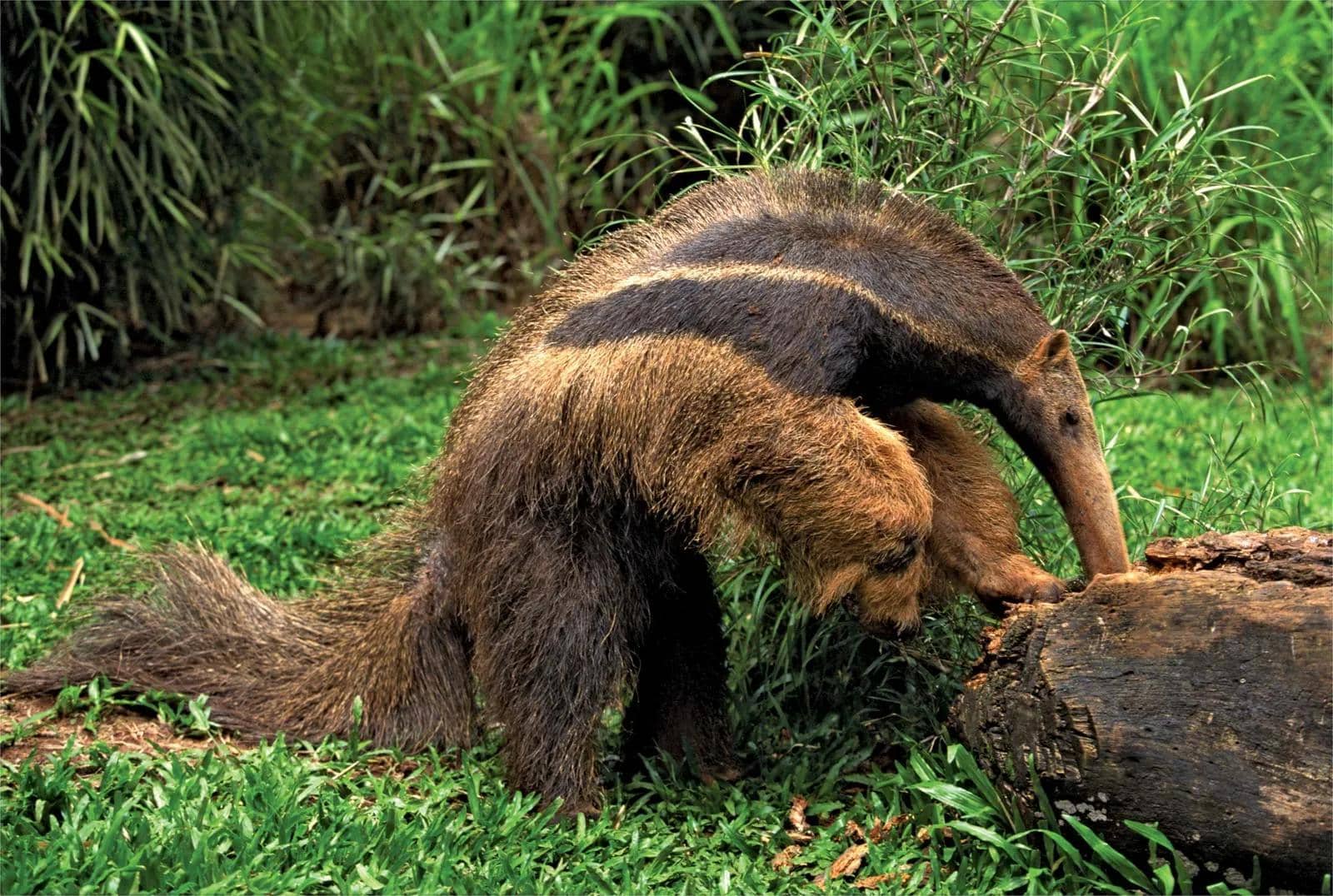
Did you know that the giant anteater can consume up to 30,000 ants and termites in a single day? This fascinating creature, native to Central and South America, boasts a unique appearance with its elongated snout and bushy tail. Unlike most mammals, giant anteaters lack teeth, relying instead on their long, sticky tongues to capture prey. Their keen sense of smell is 40 times more powerful than that of humans, helping them locate insect nests with ease. Despite their size, these animals are surprisingly agile, capable of defending themselves with sharp claws. Intrigued by these incredible facts? Keep reading to learn more about the giant anteater's habits, habitat, and role in the ecosystem.
Giant Anteaters: Nature's Unique Insectivores
Giant anteaters are fascinating creatures with many unique characteristics. These animals are not only intriguing due to their appearance but also because of their behaviors and adaptations. Let's dive into some interesting facts about these remarkable mammals.
-
Scientific Name: The scientific name for the giant anteater is Myrmecophaga tridactyla.
-
Size: They can grow up to 7 feet long, including their tail, and weigh between 60 to 140 pounds.
-
Diet: Giant anteaters primarily eat ants and termites, consuming up to 30,000 insects in a single day.
-
Tongue: Their tongues can extend up to 2 feet, allowing them to reach deep into ant hills and termite mounds.
-
No Teeth: Unlike many mammals, giant anteaters have no teeth. They use their long tongues to lap up insects.
-
Claws: They have powerful claws on their front feet, which they use to tear open ant hills and termite mounds.
-
Sense of Smell: Their sense of smell is 40 times more sensitive than that of humans, helping them locate food.
-
Solitary Animals: Giant anteaters are generally solitary, coming together only to mate.
-
Habitat: They are found in Central and South America, inhabiting grasslands, deciduous forests, and rainforests.
-
Tail: Their bushy tails are used for balance and can also serve as a blanket to keep them warm.
Unique Adaptations and Behaviors
Giant anteaters have evolved several unique adaptations that help them survive in their environments. These adaptations make them one of the most specialized feeders in the animal kingdom.
-
Walking on Knuckles: They walk on their knuckles to protect their claws from wear and tear.
-
Slow Metabolism: They have a slow metabolism, which helps them conserve energy.
-
Low Body Temperature: Their body temperature is lower than most mammals, around 91 degrees Fahrenheit.
-
Swimming Ability: Despite their size, they are good swimmers and can use their long snouts as snorkels.
-
Communication: They communicate through hisses, snorts, and sniffs.
-
Lifespan: In the wild, they can live up to 15 years, while in captivity, they can live over 20 years.
-
Reproduction: Females give birth to a single offspring after a gestation period of about 190 days.
-
Parental Care: The young anteater rides on its mother's back for several months after birth.
-
Predators: Their main predators include jaguars and pumas.
-
Defense Mechanism: When threatened, they stand on their hind legs and use their powerful claws to defend themselves.
Conservation Status and Human Interaction
Giant anteaters face several threats in the wild, primarily due to human activities. Understanding their conservation status and how they interact with humans is crucial for their survival.
-
Conservation Status: They are listed as Vulnerable by the IUCN due to habitat loss and hunting.
-
Habitat Destruction: Deforestation and agricultural expansion are major threats to their habitat.
-
Road Accidents: Many giant anteaters are killed by vehicles while crossing roads.
-
Hunting: In some areas, they are hunted for their meat and claws.
-
Ecotourism: Ecotourism initiatives are helping to raise awareness and funds for their conservation.
-
Protected Areas: Several national parks and reserves in South America provide safe habitats for giant anteaters.
-
Research: Ongoing research helps scientists understand their behavior and needs, aiding in conservation efforts.
-
Captive Breeding: Zoos and wildlife sanctuaries participate in captive breeding programs to help increase their population.
-
Education: Educational programs aim to teach the public about the importance of giant anteaters and their role in the ecosystem.
-
Cultural Significance: In some cultures, giant anteaters are considered symbols of strength and resilience.
-
Climate Change: Changes in climate patterns affect their food sources and habitat, posing an additional threat.
-
Community Involvement: Local communities are increasingly involved in conservation efforts, recognizing the importance of preserving these unique animals.
The Final Footnote on Giant Anteaters
Giant anteaters are truly fascinating creatures. From their unique tongues that can flick in and out up to 150 times per minute to their powerful claws used for defense and digging, these animals are marvels of nature. They play a crucial role in controlling insect populations, especially ants and termites, which helps maintain ecological balance. Despite their somewhat solitary nature, they have a significant impact on their environment.
However, giant anteaters face threats from habitat loss and road accidents. Conservation efforts are essential to ensure their survival. By understanding and appreciating these incredible animals, we can contribute to their protection.
So next time you think about the animal kingdom, remember the giant anteater. It's not just an odd-looking creature with a long snout; it's a vital part of our world's biodiversity. Let's do our part to keep them around for future generations to admire.
Was this page helpful?
Our commitment to delivering trustworthy and engaging content is at the heart of what we do. Each fact on our site is contributed by real users like you, bringing a wealth of diverse insights and information. To ensure the highest standards of accuracy and reliability, our dedicated editors meticulously review each submission. This process guarantees that the facts we share are not only fascinating but also credible. Trust in our commitment to quality and authenticity as you explore and learn with us.
